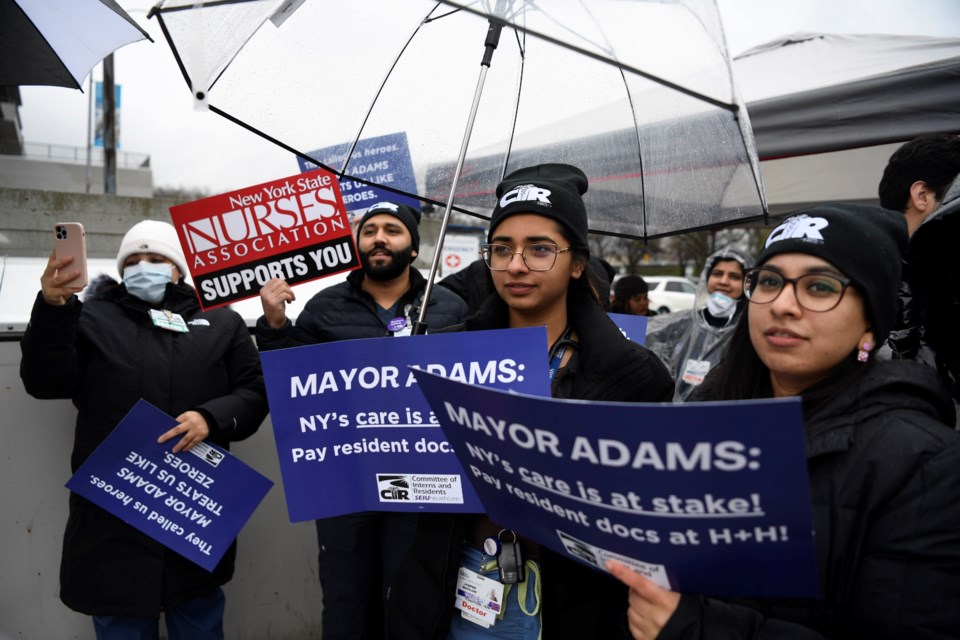Hundreds of resident physicians working for the city hospital system are holding rallies outside of their New York City Health + Hospitals workplace through the week to demand fair compensation for their work.
Resident physicians at H+H, who are represented by the Committee of Interns and Residents union, have been negotiating a new contract with the city since May 2023. So far, residents say they have felt disrespected by the mayor and the Office of Labor Relations throughout the process.
Because NY public employees cannot strike, residents are hosting brief unity breaks outside of hospitals in the H+H network, including Kings County Hospital, Coney Island Hospital and Woodhull Medical Center.
“Mayor Adams keeps saying he wants to make this city more liveable for average New Yorkers," said Dr. Shane Solger, a resident physician in his fourth year at Kings County Hospital. "Paying us, the residents, seems like it’s consistent with that message."
Pay Equity
Resident physicians across the city working for NYC H+H are the lowest paid residents in the city, according to CIR. Based on their last contract, which expired in 2021 and still applies until a new contract is agreed upon, a postgraduate year one resident makes $66,247. Residents haven’t received a raise since March 2020, and also work up to 80-hour weeks, according to CIR.
For an 80-hour work week assuming every vacation day is used, that comes out to $17.25 an hour for a first year resident, or $1.25 above the city’s minimum wage.
Residents working at New York Presbyterian Queens Hospital make $78,800 in their first year, a $12,553 difference between H+H first year residents.
On top of caring for patients, H+H residents often get saddled with non-physician work like drawing blood and coordinating patient transport, according to Dr. Salma Sadaf, a resident physician in her second year at Kings County Hospital.
“If there is a transport person who calls out, we roll the patients down. We take the patients to scans. We do phlebotomy jobs. Jobs that aren’t physician jobs,” said Sadaf in an interview with BK Reader.
Contract Negotiations
CIR is asking for a 4% yearly raise, an increase in personal days from two to three, a $5,000 housing allowance, an increase in the patient care trust fund, work-travel reimbursement and a ban on making pregnant residents work night shifts, among other things.
Throughout negotiations, the city has insisted on a 3% yearly raise, a pattern other unions agreed to, and have refused many of the core demands made by the residents.
“Unfortunately we’ve had to drop literally all of the things that we wanted because the city was unwilling to move on the bare minimum,” said Solger.
If OLR's suggestion of a 3% yearly raise is adopted, by 2025, residents would be making $5,000 less on average than residents at other private NYC hospitals in their first year. In their third year, that becomes $7,800. In their fifth year, the gap widens to $10,000 on average, according to Solger.
“In 2021, inflation was at 8%, 2022 it was similar rates. If they continue to give us the 3% hike, we would be getting poorer and poorer” said Sadaf.
“It’s just unthinkable that we’d be asking for a living wage from the mayor. They don’t understand or they don’t care. That’s what I think. It’s so frustrating.”
“Nobody’s going to stay back because we know how this whole system works. They’re going to lose out on all quality doctors and in the end our patients suffer,” said Sadaf.
The Office of Labor Relations did not respond to a request for comment.






